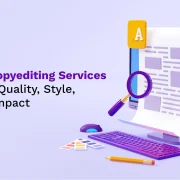
How Can Universities Build An eLearning Platform?
With university education becoming increasingly expensive, online courses have emerged as excellent alternatives to traditional education. The ongoing pandemic has also contributed to the rapid adoption of eLearning platforms. The key driver for the industry’s growth is the demand for cost-effective and safe learning techniques in the academic sector.
These eLearning platforms for universities deliver training through digital devices such as smartphones, computers, and tablets.
Thus, now is the best time for creating an eLearning platform that is effective and flexible and complements traditional learning approaches. In this blog, we’ll explore the processes for building an eLearning platform, taking into account all the current trends.
But before getting into the nitty-gritty details of how to build an eLearning platform, let’s quickly discuss what an eLearning platform is and what the various kinds are.
Table of Contents:
- An Overview of eLearning Platforms for Universities and Their Types
- How Can Universities Build an eLearning Platform?
- Key Features to Include in Your eLearning Platform
- Final Thoughts
An Overview of eLearning Platforms for Universities and Their Types
In simple words, an online learning platform for universities is an online application where students can enrich their knowledge in a given area or field. The eLearning market has been increasing at an explosive rate over the last few years through the use of advanced technologies and interactive and engaging learning experiences for users.
To build powerful eLearning platforms for universities, you first need to decide on the type of platform you wish to go for. Traditionally, an eLearning platform or website can be categorized into the following types:
- Computer-Managed Learning (CML): Here, computers are used to manage and assess learning processes.
- Computer-Assisted Instruction (CAI): It uses computers along with traditional teaching.
- Synchronous Online Learning: Allows students to participate in the learning process together at the same time, irrespective of the place they are in.
- Asynchronous Online Learning: In this type, students study independently at different times and locations, without any real-time communication taking place.
- Fixed eLearning: In this mode of learning, content used during the learning process does not change from its original state, and all students receive the same information.
- Adaptive eLearning: A new and innovative type of learning that makes it possible to adapt and redesign learning materials for individual learners.
- Interactive Online Learning: Allows senders to become receivers and vice versa, effectively enabling two-way communication between the parties involved.
- Collaborative Online Learning: A modern learning method that allows multiple students to learn and achieve their learning objectives together as a group.
Also Read: 5 Microlearning Best Practices for Effective Employee Training!
How Can Universities Build an eLearning Platform?
Here’s how to create a learning platform for universities.
1. Identify Your Niche
The first step in building an eLearning platform is to consider the kind of courses that will be available there. Do you wish to encompass a wide range of subjects or launch a more industry-specific education marketplace?
Some of the questions that can help you decide are:
- What subjects do you want to focus on?
- What are students more interested in – learning or improving their skill sets?
- How can you improve the skills and knowledge of learners?
- How can technology help your students learn and make subjects interactive to engage students?
- How old is your average learner, and what content might be interesting for this demographic?
2. Create the Right Model
When building an eLearning platform for universities, you should take into account multiple ways of monetizing the same before you start the development process. Some of the ways to monetize your eLearning platform include:
- Charging Per User: One of the most popular monetization models is charging users for a specific course. However, this type of monetization makes it very difficult to maintain a high retention rate.
- Subscription-Based Model: Subscription-based models are often based on monthly payments or a yearly contract with a lower monthly rate. If you decide to go with this model, it is of paramount importance that you create some extra benefits for users to make them come back to your platform.
- Paid Certification Model: An increasing number of eLearning providers nowadays offer the paid certification model with free courses, promoting the idea of easy access to education for everyone.
3. Use the Multimodal Content Delivery Approach
A great eLearning platform is one where users find value in what it offers. An excellent way to create one is with relevant content.
Instead of all text or all audio content, it is best to use a mix of various media, including texts, audio, videos, slides, infographics, gamification, and more, to make your eLearning platform much more effective for students.
Some of the other tips you can use to make your content more engaging include:
- Microlearning: Break the courses into bite-sized nuggets or small chunks (as short as 2-8 minutes) and focus each of them on a single objective.
- Add Scenarios: Put the learners into a real-world-like situation and allow them to make decisions.
- Customize the Modules: Separate the data based on different skills to make users feel that the course is relevant to them.
- Feedback: Provide the learner with immediate feedback on the results to make them feel in complete control of the learning process.
4. Regular Assessments
The eLearning platform that you build needs to make effective use of assessments to help your students track their progress and achievements. An ideal way to do this include –
- Offering tests and quizzes regularly
- Including more and more interactions when students do their assignments by adding elements such as pop-up quizzes and questions based on their previous knowledge
- Sharing assessment results and analytics or reports on students’ strengths and weaknesses with educators to help them adjust the content while also allowing learners to learn at a pace that suits them best
5. Offer An Excellent UX
A large part of the success of an eLearning platform is dependent on the usability of the eLearning space and what it looks like.
Make sure that the platform you build has easy-to-access interface elements, uses soft tones, and strategically places all the website elements. Apply minimalist design elements to your platform to help users focus only on content and learning.
Prioritizing seamless UX is important as learners will come to your platform to study, and they shouldn’t be distracted by unnecessary elements. Wrap eLearning platforms for universities are quite complex to build and require a lot of attention.
To make the most out of the platform, you need to thoroughly study your niche market to understand what software solution you can offer to your target audience. To stay ahead of the competition, your eLearning platform should offer learners the best compilation of design, content, and usability.
Key Features to Include in Your eLearning Platform
In developing an eLearning platform for your university, certain specific features can better the experience and help in making sure that your platform is successful. Some critical elements to include in your custom online learning solutions for universities are discussed as follows:
1. Intuitive User Interface (UI)
A user-friendly interface is crucial for any online learning platform for university students. Ensure the design is easy to navigate so students and educators can access courses and resources without confusion.
Key aspects of a good UI include:
- Clear menus and navigation bars.
- A responsive design that works across various devices like smartphones, tablets, and desktops.
- Search functionality to help users find courses or materials quickly.
2. Content Management System (CMS)
An effective CMS allows administrators to create, update, and manage courses effortlessly. This system should support various content formats like:
- Text documents
- Audio and video files
- Infographics
- Interactive quizzes and assessments
A well-designed CMS will make it easier to deliver multimodal content as part of your e-learning platforms for university strategy.
3. Personalized Learning Paths
A successful online learning platform for universities should cater to each student’s unique needs. Features like personalized dashboards, adaptive learning technologies, and tailored course recommendations can provide a more engaging and effective learning experience.
4. Interactive Features
Engagement is key to a successful eLearning platform. Incorporate features that promote interaction, such as:
- Discussion forums and chat rooms
- Live sessions with educators
- Collaborative tools for group projects
- Gamified elements like badges, leaderboards, and rewards
5. Analytics and Reporting Tools
Track the progress of both students and educators with comprehensive analytics. These tools can help in assessing:
- Course completion rates.
- Individual learner performance.
- Areas for improvement in course materials or teaching methods.
6. Security Features
Ensuring data privacy and platform security is vital when you build an online learning platform. Implement features like:
- Secure login methods (e.g., multi-factor authentication).
- Encrypted data storage.
- Regular security audits.
7. Integration Capabilities
Your platform should integrate seamlessly with existing university systems, such as student databases, library resources, and email platforms. Additionally, compatibility with popular learning management systems (LMS) can enhance functionality.
8. Mobile Accessibility
With the growing audience on mobile devices, ensure your platform is optimized for mobile use. A responsive design and dedicated mobile apps can make learning more accessible for students on the go.
Also Read: Microlearning for Maximum Impact: Bite-Sized eLearning for Busy Sales Professionals
Final Thoughts
While the above steps are important for having an effective online learning platform, strategizing your business model is equally important. Think from the perspective of a niche audience who will be taking these courses and continually improve the platform according to their usage and preferences.
Promising trends abound in e-learning higher education. With the right assistance from an efficient digital engineering and technology solutions provider, you can better decode the essentials.
Looking to create an eLearning platform tailored to your university’s needs? Hurix Digital offers end-to-end solutions, from platform development to content design, ensuring an engaging and seamless learning experience for students and educators.
Let our expertise in digital education give shape to your institution’s eLearning vision.





